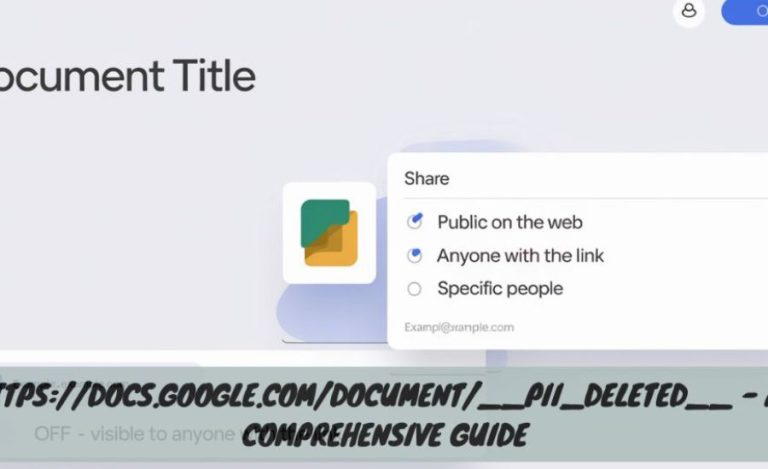Doi.com/10.22541/Au.171987178.88917357/V1, Identifiers, Accessibility & More
Introduction
Understanding Digital Object Identifiers (DOIs): A Guide for Researchers and Academics
In today’s digital age, academic publishing relies on secure, reliable, and accessible sources. One key tool that supports this need is the Digital Object Identifier, or DOI. A DOI is a unique alphanumeric string that provides a permanent link to digital content, ensuring that readers, researchers, and academics can access and reference publications easily. This article explores the importance of DOIs, their structure, how they function in research publishing, and best practices for using them effectively.
What is a DOI? An Introduction to Digital Object Identifiers

A Digital Object Identifier (DOI) is a unique code assigned to a digital document, such as a journal article, research paper, dataset, or other academic materials. Unlike URLs, which may change or become outdated, DOIs are designed to provide a permanent link to content. The DOI system was introduced in 2000 by the International DOI Foundation (IDF) and has since become a standardized tool in academic and scientific publishing.
DOIs are widely used in scholarly databases, and major citation styles (APA, MLA, Chicago) require or recommend including DOIs in citations for online academic sources. A DOI not only improves content accessibility but also adds a layer of credibility and authenticity to research.
The Structure of a DOI: Breaking Down the Components
A typical DOI, such as “doi.com/10.22541/au.171987178.88917357/v1,” comprises several parts, each with specific information:
- Prefix: Every DOI begins with “10,” followed by a period and a numeric prefix that indicates the registrant organization (e.g., “10.22541”).
- Suffix: After the prefix, the suffix is a unique code assigned to the document, which can include letters, numbers, and punctuation.
- Version: DOIs can include version identifiers, allowing updates or modifications to be reflected while maintaining a consistent link.
This structure ensures that each document has a unique DOI that can be easily traced to its source, even if the content is updated or moved.
The Importance of DOIs in Academic and Research Publishing
DOIs play a crucial role in maintaining the integrity and accessibility of scholarly work. Here are some of the ways DOIs benefit researchers and academics:
Permanence and Stability
Unlike URLs, which may break or become outdated over time, DOIs are designed to remain unchanged. This ensures that users can always access the document through the same DOI link, even if the content has been moved to a different location.
Enhanced Discoverability and Accessibility
DOIs allow for easy discovery of academic content across platforms. By simply entering a DOI into a search engine or academic database, users can access the exact resource, which streamlines research and reduces errors in sourcing.
Credibility and Verification
DOIs contribute to the credibility of academic work. When researchers include a DOI in their citations, it indicates that the source is reputable and verifiable. This helps readers trust that the research is based on legitimate, accessible sources.
Facilitating Accurate Citations
Citing sources correctly is essential in academia, and DOIs help simplify the process. They provide a standardized reference format that is recognized across citation styles, ensuring that the citation remains accurate and traceable.
How DOIs Work: The Mechanics Behind DOI Links

The DOI system is managed by the International DOI Foundation (IDF), which partners with registration agencies, such as CrossRef, to assign and maintain DOIs for published content. Here’s how the process works:
- Registration: Publishers register their digital content with a DOI registration agency like CrossRef, which then assigns a unique DOI.
- Metadata: Each DOI is linked to metadata, including the title, author(s), publication date, and publisher. This metadata makes it easy for databases to index and retrieve the content.
- Resolution: When users click on a DOI link or enter it into a search engine, the DOI system redirects them to the current location of the content, ensuring they can access the document regardless of changes in its URL.
This resolution process guarantees that DOIs remain useful and reliable over time, making them indispensable in the scholarly community.
How to Use DOIs in Academic Writing: Best Practices
Including DOIs in academic work is essential for providing accurate references and maintaining academic integrity. Here are some best practices for using DOIs in research and citations:
Including DOIs in Citations
DOIs should be included at the end of a citation in APA, MLA, and Chicago citation styles, where applicable. In APA, for example, the DOI is often preferred over a URL for academic sources. Here’s how a citation with a DOI should look:
- APA: Author(s). (Year). Title of the article. Title of the Journal, volume number(issue number), page range. https://doi.org/xx.xxxxx
Avoiding Manual Typing Errors
Since DOIs often contain complex sequences of numbers and letters, they should be copied directly from the source whenever possible to avoid mistakes. Typing errors in DOIs can lead to broken links, reducing the citation’s accuracy.
Verifying DOI Links
Before submitting academic work, verify that all DOI links are active and redirect to the correct source. This is especially important for research articles, where accurate citations are essential for credibility.
Citing Updated Versions with Version Numbers
If a document has been updated and assigned a new version number (e.g., “/v1” in a DOI), be sure to include this in your citation. Version numbers help readers access the specific iteration of the document used in the research, ensuring transparency and accuracy.
DOI Use Beyond Journal Articles: Applications in Research Data, Reports, and More
While DOIs are most commonly associated with journal articles, their use extends to various other types of academic content, including:
- Research Data: Datasets used in studies are often assigned DOIs to facilitate sharing, reuse, and citation.
- Conference Proceedings: Papers presented at academic conferences are increasingly being published with DOIs.
- Reports and White Papers: Many organizations publish white papers and reports with DOIs, allowing them to be easily cited in academic research.
- Theses and Dissertations: Some universities assign DOIs to theses and dissertations, making them more accessible to other researchers.
DOIs allow these diverse resources to be easily located, cited, and verified, enhancing the impact and reach of the work beyond traditional journal articles.
How DOIs Support Open Access Publishing and Knowledge Sharing
Open access publishing has transformed the academic landscape by making research freely available to the public. DOIs play a significant role in this shift by ensuring that open access articles are easily discoverable and traceable. With DOIs, readers can access these articles regardless of changes in the publishing platform, enhancing the longevity and reach of open-access content.
DOIs and Preprint Archives
Preprint archives, which provide early versions of research papers before peer review, also benefit from DOI assignments. DOIs allow preprints to be cited in academic literature, even if they have yet to be published in a formal journal. This accelerates the dissemination of knowledge and supports the rapid sharing of findings within the research community.
Facilitating Research Collaboration
The widespread use of DOIs in open access content fosters collaboration across disciplines and institutions. Researchers can easily access and reference each other’s work, encouraging knowledge sharing and interdisciplinary projects that drive scientific advancement.
Conclusion: Embracing the Power of DOIs in Academic Publishing

The Digital Object Identifier (DOI) system has revolutionized how we manage, access, and cite academic content. From ensuring permanent access to enhancing credibility, DOIs provide numerous benefits that support the accuracy, integrity, and reach of academic work.
As digital publishing continues to expand, understanding and using DOIs effectively has become essential for researchers, academics, and students alike.
FAQs about Digital Object Identifiers (DOIs)
Q1: What is a DOI?
- A Digital Object Identifier (DOI) is a unique alphanumeric string assigned to a digital document, such as a journal article, dataset, or research paper. This unique identifier provides a permanent link to the content, ensuring stable, long-term access.
Q2: How is a DOI different from a URL?
- Unlike URLs, which can change or become inactive over time, DOIs are permanent and remain stable. If a document’s location changes, the DOI link is updated to reflect the new location, ensuring continuous access.
Q3: Why are DOIs important in academic publishing?
- DOIs enhance the accessibility, stability, and credibility of academic content. They allow for easy and reliable citation across multiple platforms and are essential in helping researchers and readers locate academic resources efficiently.
Q4: How can I locate a document using its DOI?
- Simply enter the DOI in a search engine, academic database, or prefix it with “https://doi.org/” in a web browser. This will redirect you to the content’s location.
Q5: What is the structure of a typical DOI?
- A DOI consists of a prefix (e.g., “10.22541”) and a suffix (e.g., “au.171987178.88917357/v1”). The prefix identifies the registration organization, and the suffix is unique to the document.
Q6: Do citation styles require DOIs?
- Yes, most citation styles, including APA, MLA, and Chicago, require or recommend including DOIs when citing online academic sources. In APA style, for example, the DOI often replaces the URL in the citation.
Q7: Are DOIs only used for journal articles?
- No, DOIs are used for a variety of digital academic content, including research datasets, conference proceedings, white papers, and even preprint articles. Their application is growing as they provide a reliable means of citation across multiple formats.
Q8: How are DOIs assigned to documents?
- Publishers register content with a DOI registration agency like CrossRef, which assigns a unique DOI to each document. This DOI is linked to metadata, such as title, authors, and publication date, which aids in content discovery.
Q9: Can DOIs change over time?
- No, a DOI itself does not change, but it can be updated to link to a new location if the document is moved. This ensures that the content remains accessible even if the original URL is no longer valid.
Q10: What is a versioned DOI, and when is it used?
- A versioned DOI includes identifiers for different versions of a document (e.g., “/v1” in a DOI). This allows users to access specific document iterations, which is useful when citing preprints or other updated content.
Interesting Facts about DOIs
- The DOI System’s Age: The DOI system was established in 2000 by the International DOI Foundation (IDF) to provide a reliable system for accessing and citing digital academic content.
- International Usage: DOIs are widely used and recognized across countries and academic disciplines, making them one of the most standardized methods for digital referencing in research.
- DOIs in Different Languages: The structure of DOIs makes them language-neutral, meaning they can be used and understood universally, which supports international research collaboration.
- Credibility Enhancer: Including a DOI in citations improves the credibility of academic work, as it allows for direct verification of sources, aiding in transparency and trustworthiness.
- DOIs and Open Access: DOIs have become essential in open access publishing, where they help make research freely available and discoverable by the public, thus supporting the global sharing of knowledge.
- Resolution Technology: The DOI system uses resolution technology to ensure that the DOI link always redirects users to the correct content location, even if the hosting site changes.
- DOIs for Data Sets: DOIs aren’t just for articles; they’re also increasingly assigned to research datasets. This enables researchers to cite data as easily as traditional articles, promoting data sharing and reuse.
- Preprints and DOIs: Preprints, or early versions of research papers, are often assigned DOIs, allowing them to be cited in academic literature even before undergoing peer review. This fast-tracks knowledge sharing in the research community.
- Multi-disciplinary Use: DOIs are used across disciplines, from science and engineering to the humanities, making them one of the most versatile tools in academic publishing.
- DOI Prefixes are Unique to Publishers: Each publisher has a unique prefix in the DOI system, ensuring that all DOIs they create are traceable back to them, which helps maintain quality and reliability in academic publishing.
For more Information About Blog visit francherway





